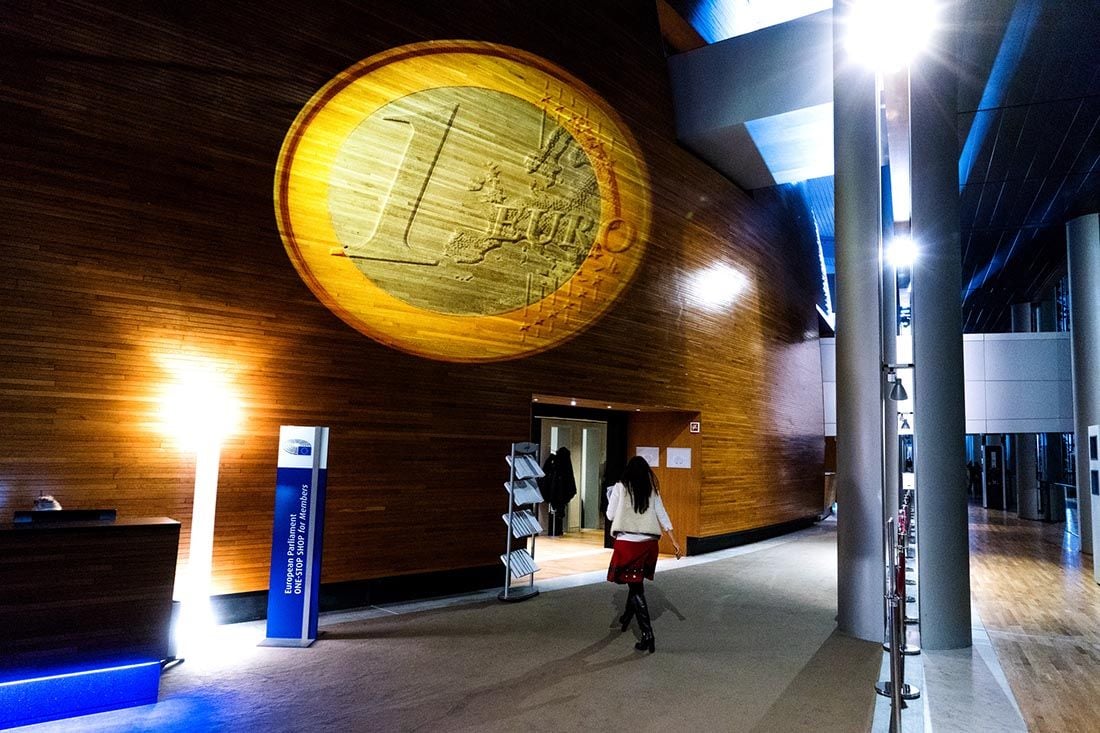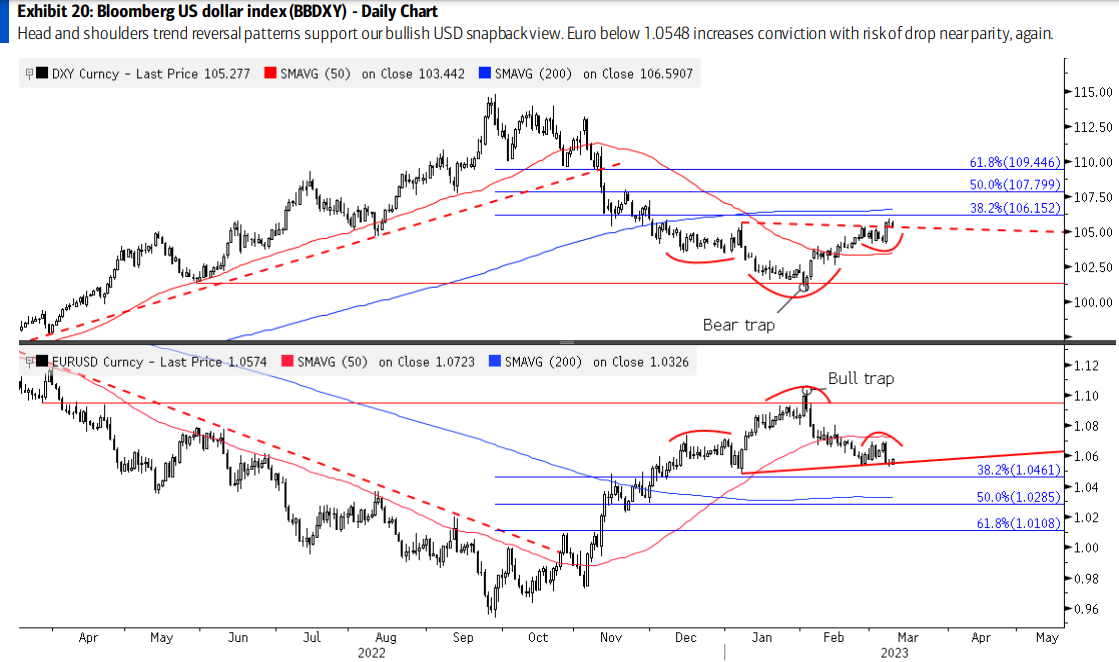Bearish EUR/USD Trend Reversal Trigger Sits at 1.0548 - BofA Techs
"The DXY has already broken above the neckline at 105.30 (confirmed) while the euro is sitting on the neckline at 1.0548 (unconfirmed)" - BofA Global Research.

Image © European Union - European Parliament, Reproduced Under CC Licensing.
The Euro to Dollar exchange rate came close to its new year low at one point this week but would trigger a technical reversal of its six-month recovery trend on the charts in the event of any daily close below the 1.0548 level, according to technical analysis from BofA Global Research.
Europe's single currency pared losses to trade within a short distance of 1.07 on Friday following a near-miss with the round number of 1.05 in the midweek session and with this recovery, Euro has avoided triggering a "head and shoulder reversal pattern" that has recently formed on the charts.
"The DXY [Dollar Index] has broken above the neckline of the pattern suggesting it is confirmed and could rally to 106.60, 107.80 and possibly 109.45 provided it remains above the right shoulder low of 104.09," says Paul Ciana, chief technical strategist at BofA Global Research.
"The euro has yet to break below its neckline now at 1.0548 but is close. A daily close below this would confirm the top and would estimate a drop to 1.0335, 1.0285 and possibly 1.01 while remaining below 1.07," he adds in a review of the EUR/USD and U.S. Dollar Index charts earlier this week.
Ciana says the technical outlook for the U.S. Dollar Index and its constituent currency pairs is bullish over a one-to-three-month horizon.
To optimise the timing of international payments you could consider setting a free FX rate alert here.
A bullish Dollar Index outlook implies bearish prospects for EUR/USD, given that it makes up around 57% of the index.
"The daily charts of the DXY and euro show head and shoulders trend reversal patterns that support our bullish USD snapback view beginning February. The DXY has already broken above the neckline at 105.30 (confirmed) while the euro is sitting on the neckline at 1.0548 (unconfirmed)," Ciana says.
The Euro gained little if anything on Thursday after the European Central Bank (ECB) pushed ahead with an earlier indicated increase in interest rates but said little about what could be expected for the months ahead.
This leaves the single currency to be driven by economic data emerging from the Eurozone and the directional trend in the Dollar, which will be determined in large part by next Wednesday's Federal Reserve (Fed) interest rate decision and accompanying forecast update.
"We have been arguing that inflation will be sticky and recent data makes us more concerned. High inflation has been positive for the USD and negative for JPY. Movements in the rest of G10 have been contained," says Athanasios Vamvakidis, head of FX strategy at BofA Global Research.
 Above: Euro to Dollar rate shown at hourly intervals with other selected pairs. Click image for closer inspection. (If you are looking to protect or boost your international payment budget you could consider securing today's rate for use in the future, or set an order for your ideal rate when it is achieved, more information can be found here.)
Above: Euro to Dollar rate shown at hourly intervals with other selected pairs. Click image for closer inspection. (If you are looking to protect or boost your international payment budget you could consider securing today's rate for use in the future, or set an order for your ideal rate when it is achieved, more information can be found here.)
"The correlation between inflation and FX is positive, assuming central banks continue fighting inflation. Which central banks will stick to their inflation target and which will not will determine FX ahead. For now, we see risks for more USD strength," Vamvakidis writes in a Friday research.
Thursday's updated forecasts suggested the ECB is close to viewing itself as already having done enough with interest rates in order to ensure a timely return of inflation to the two percent target but the bank's formal stance is one dependent on economic data.
However, on the other side of the EUR/USD equation, economists and markets have revised down expectations to imply uncertainty about whether the Fed will even raise rates at all next week or any more from here, which has appeared to have a burdensome impact on the Dollar of late.
This was after funding pressures at some small U.S. lenders snowballed into the failures of Silicon Valley Bank and others last weekend but before international spillover effects pulled a rug out from under the European banking sector and single currency on Wednesday.
"While macro uncertainty remains high, neither USD bears nor bulls have been able to drive the overall price action in the market for an extended period of time. However, we believe the current dynamic is unlikely to last for long," says Vadim Iaralov, a quantitative strategist at BofA Global Research.
 Above: Euro to Dollar rate shown at daily intervals with other selected pairs. Click image for closer inspection.
Above: Euro to Dollar rate shown at daily intervals with other selected pairs. Click image for closer inspection.

